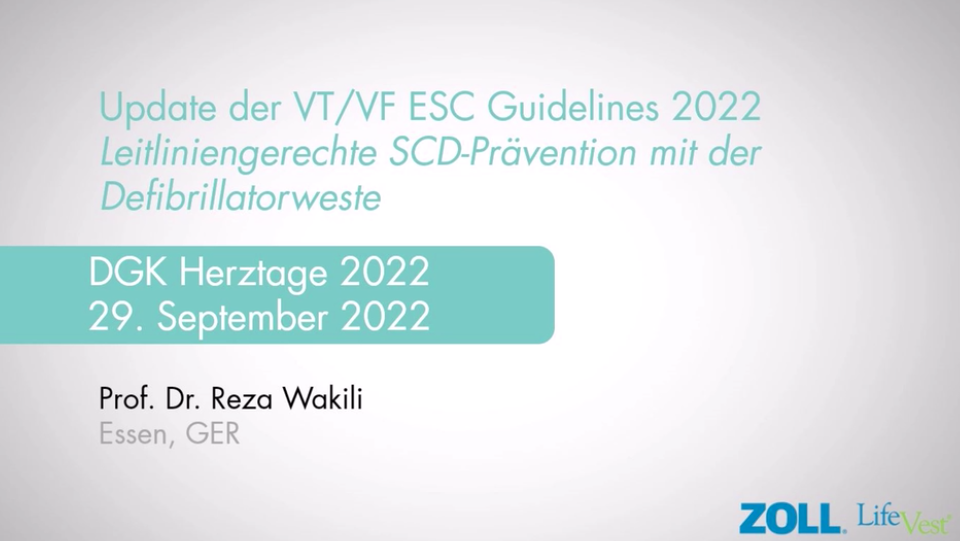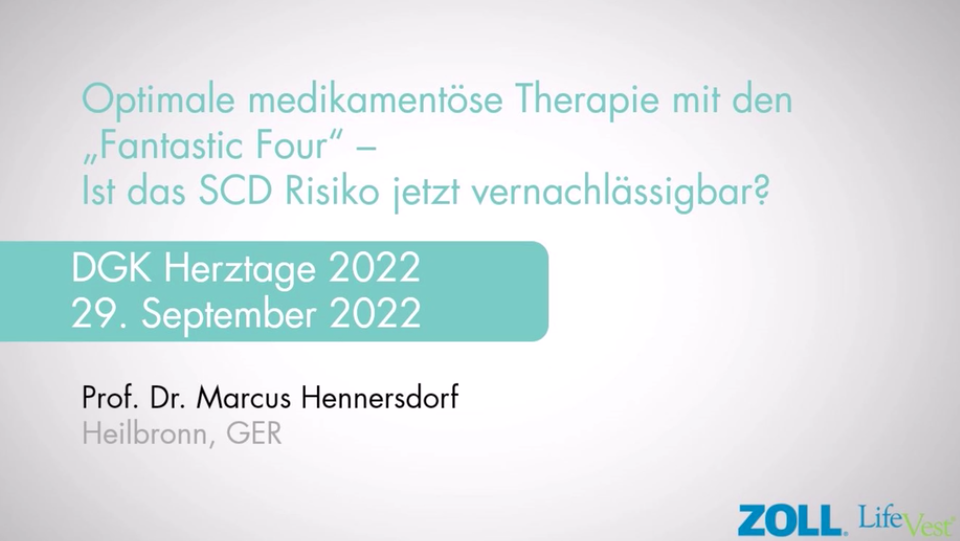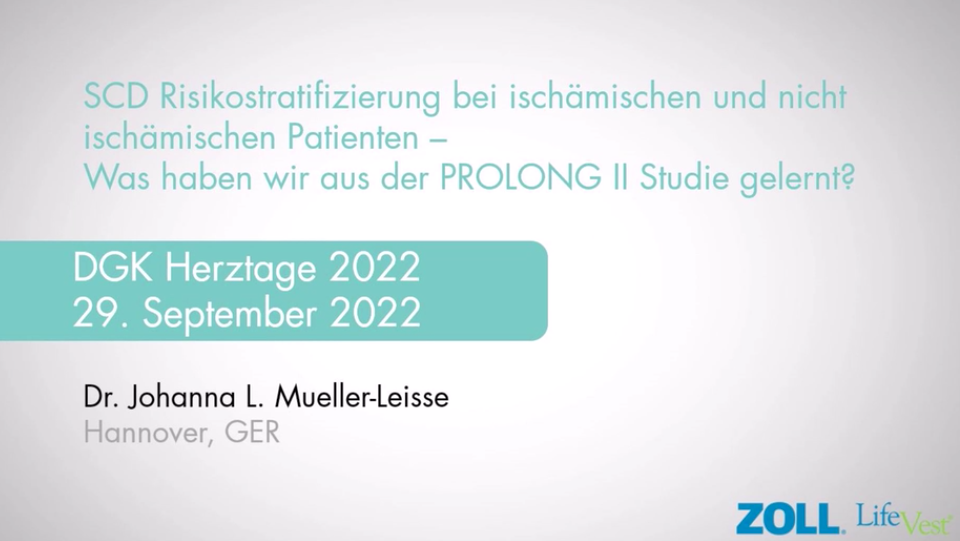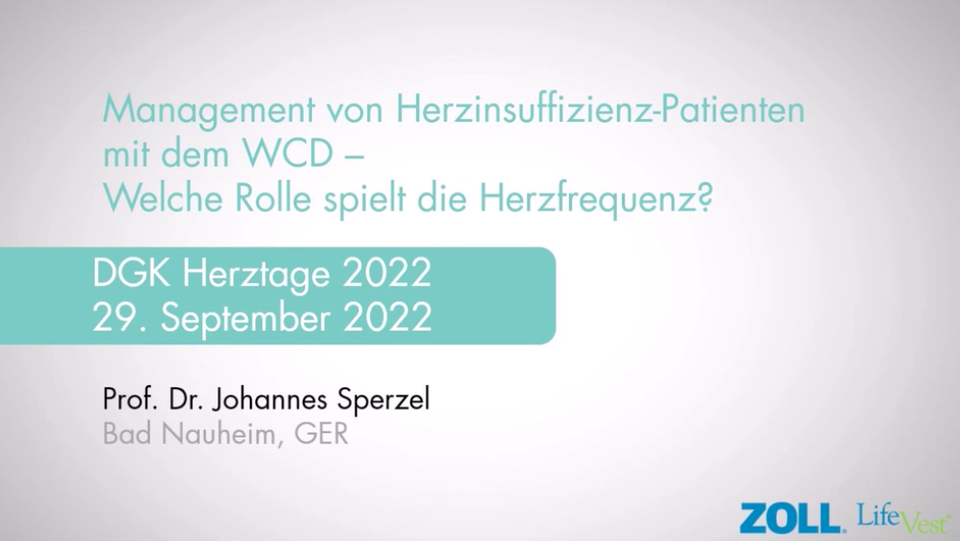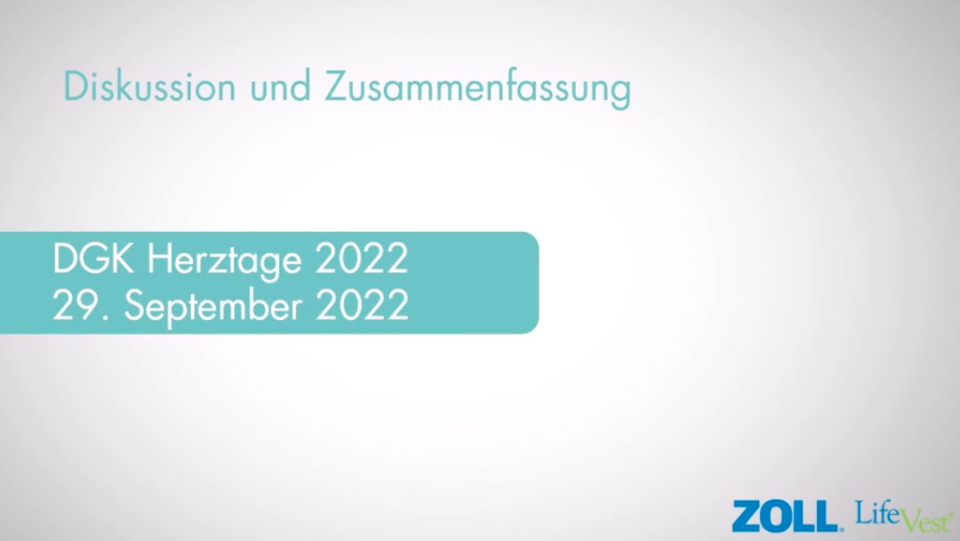ESC VT/VF Guidelines – Leitliniengerechte SCD-Prävention mit der Defibrillatorweste
Published: 01 September 2022
-
Views:
 1063
1063
-
Likes:
 7
7
-
Views:
 1063
1063
-
Likes:
 7
7
Overview
Join Prof Reza Wakili (Essen, DE), Prof Marcus Hennersdorf (Heilbronn, DE), Dr Johanna Müller-Leisse (Hannover, DE) and Prof Johannes Sperzel (Bad Nauheim, DE) at DGK 2022 as they talk us through ESC Guidelines 2022, Optimal Drug Therapy With the Fantastic Four, PROLONG-II Trial, Management of Heart Failure Patients With the WCD and more.
This content is sponsored by ZOLL

More from this programme
Part 1
Update der VT/VF ESC Guidelines 2022
"One can emphasise that non-antiarrhythmic drugs are definitely necessary to treat the patient optimally and then make a decision on how to proceed toward antiarrhythmic therapy," Prof Wakili said. Nevertheless, optimal drug therapy for heart failure continues to require at least 3 months of time until full titration. Only at a later stage a decision should be made as to whether or not there is an ICD indication. ICD therapy was downgraded for DCM patients as well as for non-ischemic indications. LVEF remains the key parameter in SCD risk stratification. "But especially for DCM, there are now other tools and parameters, namely cardiac imaging as well as genetic testing" that can be considered to support an individualised therapy plan. Generally, Prof Wakili recommends a structured work-up to enable a detailed work-up after survived SCD.
Part 2
Optimale medikamentöse Therapie mit den „Fantastic Four“ – ist das SCD Risiko jetzt vernachlässigbar?
"It remains important to recognise arrhythmogenic risk, yet not implant an ICD when it is actually not necessary." In this regard, Prof Hennersdorf relies on the minimum period of 3 months until OMT, which is now clearly outlined in the new guidelines. "We can expect that 40-50% of patients will also show an improvement in LVEF and probably won't need an ICD at all after this waiting period." Only after that, he said, one should discuss the implantation of an ICD. Until then, the WCD protects the patient from harmful cardiac arrhythmia and allows monitoring of other risk markers of SCD.
Part 3
SCD Risikostratifizierung bei ischämischen und nicht-ischämischen Patienten – Was haben wir aus der PROLONG-II Studie gelernt?
Dr Müller-Leisse presented SCD Risk Stratification in Ischemic and Non-ischemic Patients in the PROLONG-II trial. She concluded that it is worthwhile to wait with finalising an ICD indication. This is particularly the case for DCM patients, as well as PPCM and myocarditis patients who would normally be considered as healthy. There was no association between WCD treatments and all-cause mortality. Ultimately, with respect to both WCD and ICD, it is up to the treating physician to assess how high the patient's arrhythmogenic risk is.
Part 4
Management von Herzinsuffizienz-Patienten mit dem WCD – Welche Rolle spielt die Herzfrequenz?
Prof Sperzel presented the "Management of Heart Failure Patients With the WCD" and explained what role the heart rate plays. "It's indisputable, the heart rate is a tool to measure and also predict mortality and corresponding deterioration of the patient's condition." Especially in patients with low LVEF, higher heart rates during daytime or nighttime heart have a direct impact on the increase of mortality. Continuous monitoring is necessary to ensure a guideline-compliant drug therapy. This is where the WCD can support both the clinician and the patient.
Part 5
DGK HT 2022 Diskussion und Zusammenfassung
In this final discussion led by Prof Jan-Malte Sinning (St. Vinzenz-Hospital, Cologne, DE) and Prof David Duncker (MH Hannover, DE) the faculty exchanges insights and experiences with the WCD.
Faculty Biographies
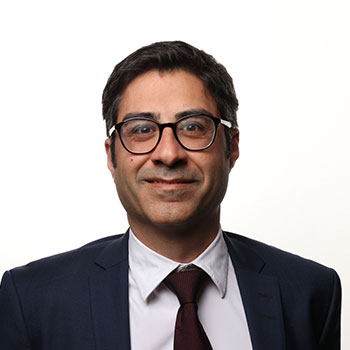
Reza Wakili
Prof Reza Wakili is the head of Arrhythmia Service and Electrophysiology Section West German Heart and Vascular Center University Hospital Essen, Germany. Prof Wakili specialises in arrhythmias.






